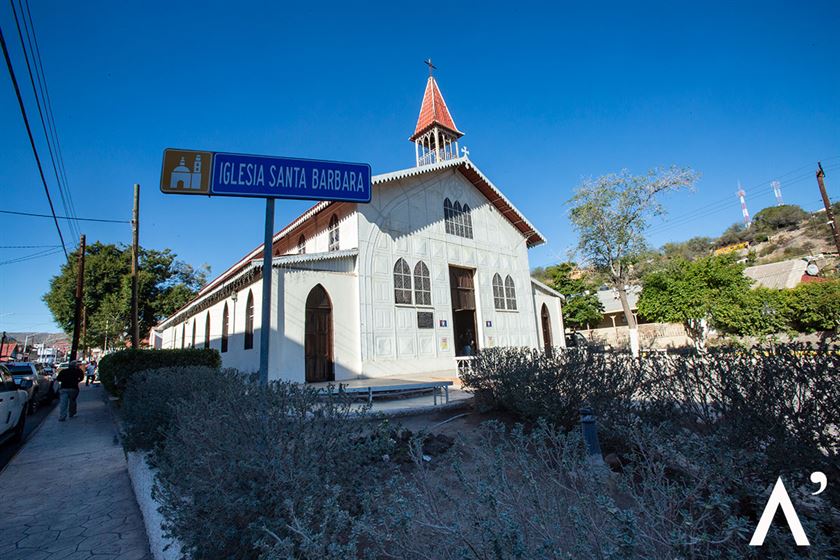Head of the municipality of Mulegé, this small city, located between two mesas, is affectionately known by the locals from Baja California Sur as “Cachanía”. It was founded in the 19th century, after the then president of Mexico, Porfirio Díaz, granted the Santa Águeda Mining District concession for copper extraction to the French company, El Boleo, on July 7, 1885. The license covered from Santa Rosalía to Mulegé.
Its houses, monuments, buildings, and streets seemingly embraced by ancestral mountains lead to a town with French essence, because of its colonial architecture, especially in Mesa Francia, where the Historic Center is located, declared a Historic Monument by the State Congress of Baja California Sur in 1884.

Compaigne du Boleó: the birth of a mining colony
Its foundation by the Mirabaud Bank, related to the Rothschild dynasty, Europeans of German-Jewish origin, marked the beginning of decades dedicated to the mining of copper deposits and the birth of a sophisticated community.
900 thousand tons of copper were transported through a railway that covered approximately 35 km and was made up of at least 5 locomotives and more than 100 wagons.
It is said that, in addition to the natives, the first settlers of Santa Rosalía were indigenous Yaquis and Europeans who were brought to work in the mine under the general direction of Charles Laforgue, who gave instructions from Paris and were executed by the American William W. Rose.
Points of Interest
- Church of Santa Barbara

This “iron house”, designed by Gustave Eiffel in 1884, houses colonial decorations of the time and religious images illuminated by colorful stained-glass windows that create a harmonious and mystical atmosphere that will envelope you the moment you set foot in this place.
- Mining History Museum

The wooden building was built in the middle of the 20th century by the El Boleo company. Inside, you will find tools used by the community during the mining boom, as well as a tour of the offices that once operated for this company.
- El Boleo Bakery
This is perhaps the most popular bakery in Baja California Sur and is a must-see, highly recommended by the locals of Santa Rosalía. Its recipe has prevailed since its beginnings in 1901, when it was established as a place to satisfy the longing that the French felt for their country’s bread. It uses brick ovens and the most popular breads baked there are: birote, virginia and pitahaya.
- French Hotel

It was founded as “La Casa del Francés” and operated like this from 1840 through 1863. It can be disassembled and is one of the best-preserved structures. Visitors who came to see the work of the French stayed here. Inside, you can find characteristic decorations of this culture, as well as some items that transport you to the past.
- El Boleo foundry building
Also known as La Factoría, it preserves the remains of what were once the furnaces where the metal was melted, so it is not only a much-liked point to capture a unique photograph, but it is also part of the historical cultural wealth of Santa Rosalia.

The authentic beauty of this place and the legacy of the different cultures that gave rise to this community make it an interesting destination to visit, which also has a natural abundance that enchants travelers who enter Baja California Sur and the guarantee that, as the popular expression goes, “la vie est belle!”
Curiosities:

- It is said that copper was first discovered by a rancher named José Rosas Villavicencio who, out of curiosity, sent it to Guaymas to be analyzed by the captain of the crew.
- It is believed that the company’s name El Boleo refers to boleite: a halide mineral discovered in the region.
- Santa Rosalía was the second city in Mexico to have electricity and the first in all of Baja California Sur.
- Charles Laforgue is credited with bringing the church of Santa Bárbara, after having been exhibited at the Universal Exhibition in France.
We thank Antonio César Beltrán Aguilar and Elizabeth Arcelia Real de la Toba, members of the General Directorate of Culture of Mulegé, for kindly receiving us and telling us about the most important events in the city.






